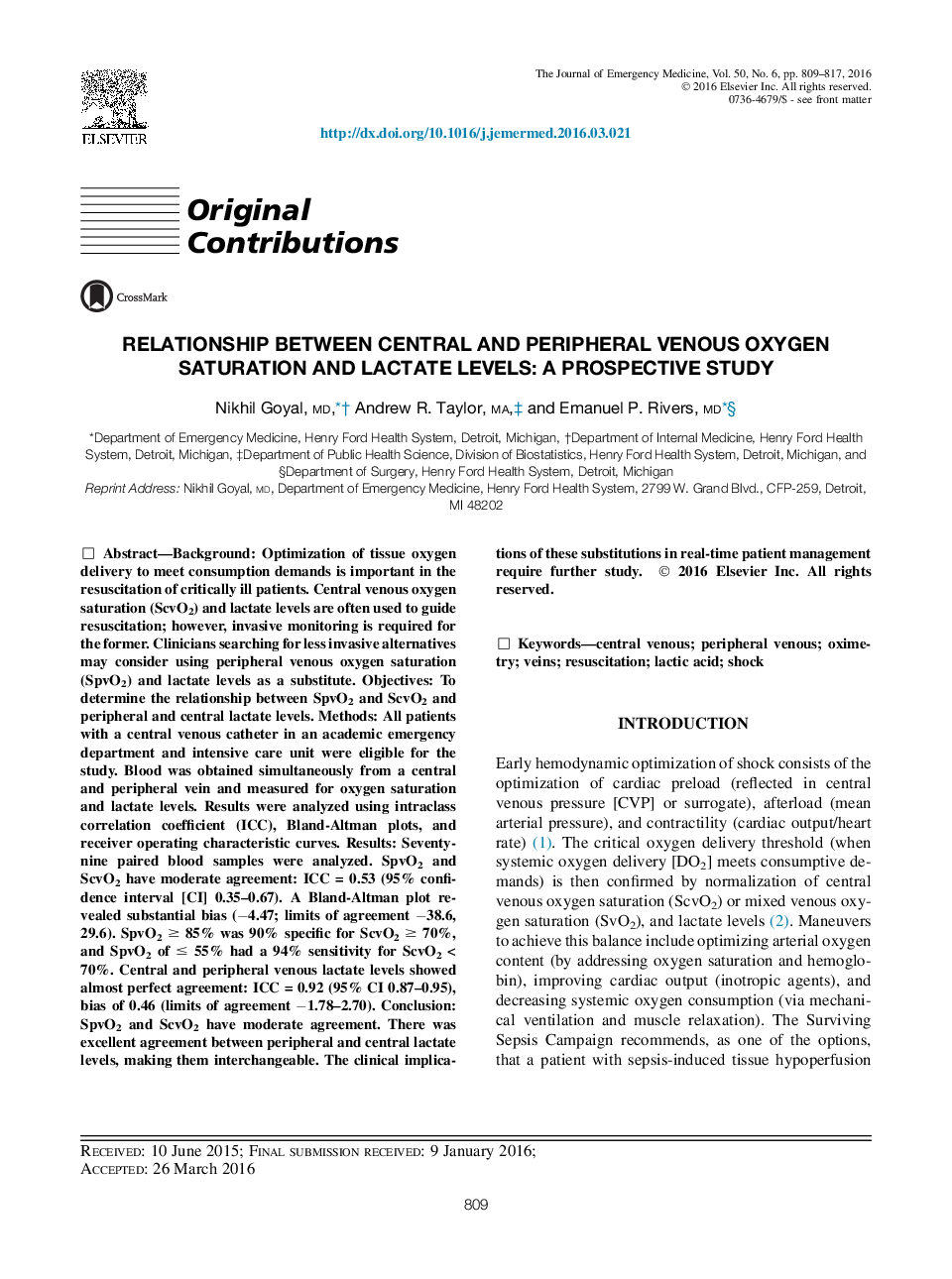| Article ID | Journal | Published Year | Pages | File Type |
|---|---|---|---|---|
| 3245716 | The Journal of Emergency Medicine | 2016 | 9 Pages |
BackgroundOptimization of tissue oxygen delivery to meet consumption demands is important in the resuscitation of critically ill patients. Central venous oxygen saturation (ScvO2) and lactate levels are often used to guide resuscitation; however, invasive monitoring is required for the former. Clinicians searching for less invasive alternatives may consider using peripheral venous oxygen saturation (SpvO2) and lactate levels as a substitute.ObjectivesTo determine the relationship between SpvO2 and ScvO2 and peripheral and central lactate levels.MethodsAll patients with a central venous catheter in an academic emergency department and intensive care unit were eligible for the study. Blood was obtained simultaneously from a central and peripheral vein and measured for oxygen saturation and lactate levels. Results were analyzed using intraclass correlation coefficient (ICC), Bland-Altman plots, and receiver operating characteristic curves.ResultsSeventy-nine paired blood samples were analyzed. SpvO2 and ScvO2 have moderate agreement: ICC = 0.53 (95% confidence interval [CI] 0.35–0.67). A Bland-Altman plot revealed substantial bias (−4.47; limits of agreement −38.6, 29.6). SpvO2 ≥ 85% was 90% specific for ScvO2 ≥ 70%, and SpvO2 of ≤ 55% had a 94% sensitivity for ScvO2 < 70%. Central and peripheral venous lactate levels showed almost perfect agreement: ICC = 0.92 (95% CI 0.87–0.95), bias of 0.46 (limits of agreement −1.78–2.70).ConclusionSpvO2 and ScvO2 have moderate agreement. There was excellent agreement between peripheral and central lactate levels, making them interchangeable. The clinical implications of these substitutions in real-time patient management require further study.
